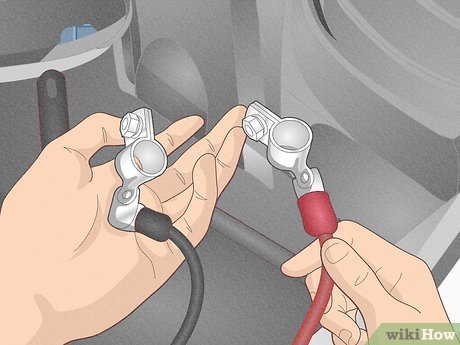

How to Disconnect a Car Battery Safely: A Complete Guide for Canadian Drivers

Disconnecting your car battery is a simple but crucial procedure, whether you’re replacing it, storing your vehicle for winter, or performing electrical repairs. However, doing it incorrectly can lead to electrical shorts, injury, or damage to your vehicle’s sensitive electronics.
Limited Time Automotive Amazon DealsHere’s a full guide on how to disconnect a car battery properly, especially under typical Canadian conditions.
Why You Might Need to Disconnect a Battery
| Reason | Benefit |
|---|---|
| Replacing the battery | Safely remove and replace without damaging electrical systems. |
| Storing the vehicle | Prevent parasitic drains that kill the battery during long periods of non-use. |
| Performing repairs | Protect yourself and your car when working near electrical systems. |
| Resetting electronics | Sometimes needed to reset modules like infotainment systems or ECUs. |
Safety Precautions Before You Start
| Step | Reason |
|---|---|
| Wear protective gloves and goggles | Batteries contain sulfuric acid and can spark. |
| Ensure the engine is completely off | Avoid current flow and potential shocks. |
| Remove metal jewelry (rings, watches) | Metal conducts electricity and can cause burns or shorts. |
| Work in a well-ventilated area | Batteries can emit hydrogen gas, which is flammable. |
| Have the radio/Security codes | Some vehicles may require security code re-entry after power loss. |
Important: If you are disconnecting the battery during extremely cold weather, be careful — frozen batteries are fragile and can crack.
Tools You’ll Need
| Tool | Purpose |
|---|---|
| Wrench (typically 10mm) | Loosen battery terminal nuts. |
| Battery terminal puller (optional) | Helps remove stuck terminals safely. |
| Protective gloves | Protects against acid and electrical shock. |
| Wire brush | Clean corroded terminals if necessary. |
Step-by-Step: How to Disconnect a Car Battery
1. Locate the Battery
- In most vehicles, the battery is under the hood.
- In some models (e.g., BMW, Dodge Challenger), it may be in the trunk or under a seat.
- Refer to your owner’s manual if unsure.
2. Identify Positive (+) and Negative (–) Terminals
- Negative terminal: Typically marked with a minus sign (–) and usually has a black cable.
- Positive terminal: Marked with a plus sign (+) and usually has a red cable.
Limited Time Automotive Amazon DealsTip: Double-check labels carefully to avoid accidental shorts.
3. Disconnect the Negative Terminal First
- Using your wrench, loosen the nut on the negative (-) terminal.
- Wiggle and lift the cable off once loose.
- Push the negative cable aside, ensuring it does not touch any metal parts.
| Step | Why It’s Important |
|---|---|
| Disconnecting negative first | Breaks the ground connection, reducing risk of electrical shorts if you accidentally touch metal parts. |
4. Disconnect the Positive Terminal
- After safely moving the negative cable, repeat the process for the positive (+) terminal.
- Again, wiggle gently if needed; do not force it.
- Move the positive cable aside without letting it touch any metal.
5. Remove the Battery (If Needed)
If you plan to remove the battery:
- Look for any clamps or hold-down bars securing the battery.
- Remove the fasteners carefully.
- Lift the battery straight up — they can weigh 30–60 lbs.
epub to pdfCanadian Winter Note: In extremely cold weather (–20°C or colder), frozen batteries can crack internally if mishandled. Always handle them gently.
Visual Summary
| Step | Action |
|---|---|
| 1 | Locate the battery and identify terminals. |
| 2 | Loosen and remove the negative (–) cable. |
| 3 | Loosen and remove the positive (+) cable. |
| 4 | Remove any securing brackets if needed. |
| 5 | Lift out the battery carefully. |
Why Negative First? (Technical Reason)
epub to pdfWhen the negative terminal is still connected, the car’s entire metal body is part of the electrical circuit (grounded).
If you accidentally touch a metal tool between the positive terminal and a grounded part (like the hood hinge or frame), it can cause a dangerous short circuit, sparks, or burns.
Disconnecting the negative first removes this risk because the electrical circuit is broken.
Special Tips for Canada
| Tip | Why It Matters |
|---|---|
| Check for corrosion | Canadian winters and road salt often cause heavy corrosion at terminals. Clean them using a wire brush. |
| Winter storage | If parking for the winter (e.g., at a cabin), disconnect the battery and store it indoors in a heated garage. |
| Use a memory saver device | Helps preserve settings in modern vehicles (radio presets, seat memory, etc.). |
Devices like a “Memory Saver” plug into your OBD-II port and keep minimal power flowing while you swap the battery.
Reconnecting the Battery
pdf page removerWhen you’re ready to reconnect:
- Reconnect positive terminal (+) first
- Reconnect negative terminal (–) second
- Tighten both clamps firmly, but do not over-tighten.
- Start your car and check electrical systems.
Common Mistakes to Avoid
| Mistake | Consequence |
|---|---|
| Disconnecting positive first | Risk of shorting and damaging electrical components. |
| Letting cables touch | Could complete a circuit and cause sparks. |
| Not securing terminals tightly | Loose connections can cause starting issues or system malfunctions. |
| Skipping gloves/protection | Risk of acid burns, sparks, or metal burns. |
Conclusion
pdf page removerDisconnecting your car battery properly is simple but requires attention to safety and the correct sequence:
Always disconnect the negative (–) terminal first and reconnect it last.
In Canada’s challenging conditions, extra caution is needed around corrosion and frozen batteries.
Whether you are replacing a dead battery before winter, prepping for long-term storage, or doing basic repairs, following these steps will ensure you and your vehicle stay safe.
Taking just 10 extra minutes to do it right can save you hundreds in repair costs and prevent injury — making it well worth the effort.
Add a comment Cancel reply
Categories
- How To (1)
- Uncategorized (171)
Recent Posts
About us

Related posts


Used Cars in Guelph: Buyer’s Guide for Smart Shoppers

Best Remote Starter Calgary Expert Reviewed
![Lease A Used Car [ Canada Guide ]](https://flipcars.ca/wp-content/uploads/2025/12/lease-a-used-car-canada-335x186.jpg)




![Lease A Used Car [ Canada Guide ]](https://flipcars.ca/wp-content/uploads/2025/12/lease-a-used-car-canada-150x150.jpg)


